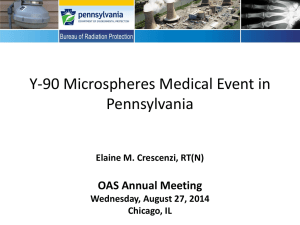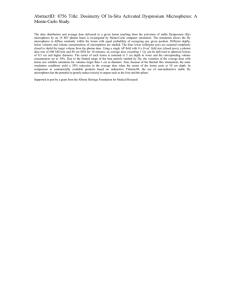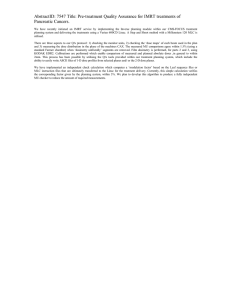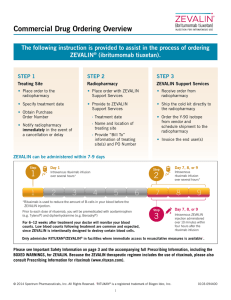AbstractID: 1632 Title: Monte-Carlo based dosimetry of Y-90 microspheres
advertisement
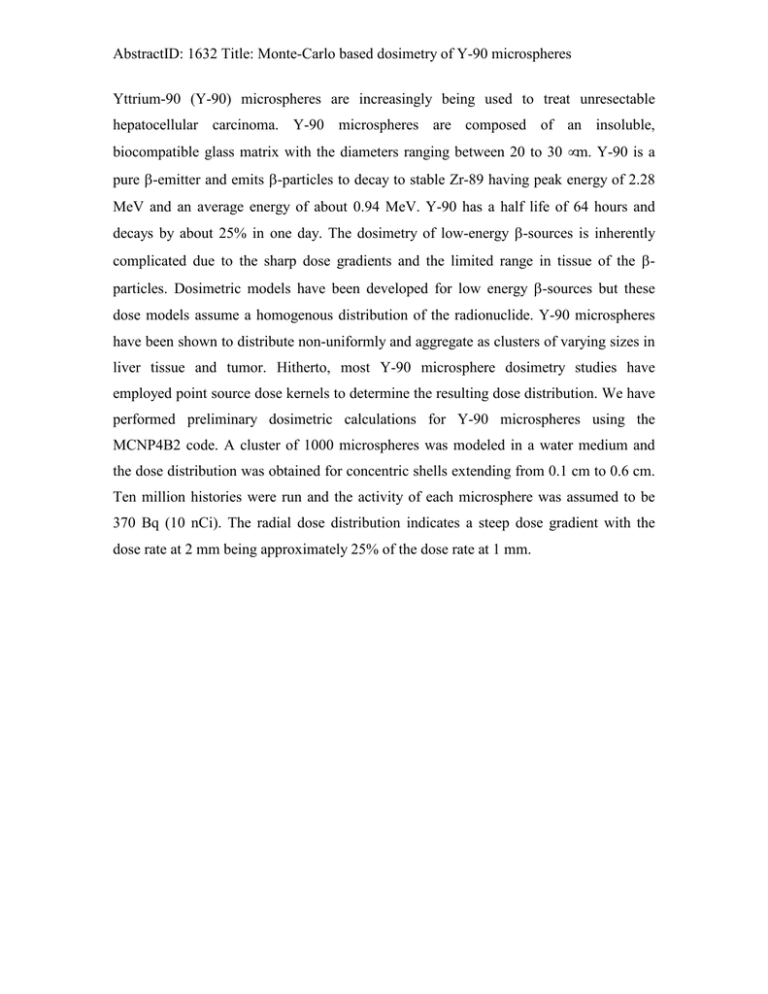
AbstractID: 1632 Title: Monte-Carlo based dosimetry of Y-90 microspheres Yttrium-90 (Y-90) microspheres are increasingly being used to treat unresectable hepatocellular carcinoma. Y-90 microspheres are composed of an insoluble, biocompatible glass matrix with the diameters ranging between 20 to 30 µm. Y-90 is a pure -emitter and emits -particles to decay to stable Zr-89 having peak energy of 2.28 MeV and an average energy of about 0.94 MeV. Y-90 has a half life of 64 hours and decays by about 25% in one day. The dosimetry of low-energy -sources is inherently complicated due to the sharp dose gradients and the limited range in tissue of the particles. Dosimetric models have been developed for low energy -sources but these dose models assume a homogenous distribution of the radionuclide. Y-90 microspheres have been shown to distribute non-uniformly and aggregate as clusters of varying sizes in liver tissue and tumor. Hitherto, most Y-90 microsphere dosimetry studies have employed point source dose kernels to determine the resulting dose distribution. We have performed preliminary dosimetric calculations for Y-90 microspheres using the MCNP4B2 code. A cluster of 1000 microspheres was modeled in a water medium and the dose distribution was obtained for concentric shells extending from 0.1 cm to 0.6 cm. Ten million histories were run and the activity of each microsphere was assumed to be 370 Bq (10 nCi). The radial dose distribution indicates a steep dose gradient with the dose rate at 2 mm being approximately 25% of the dose rate at 1 mm.
